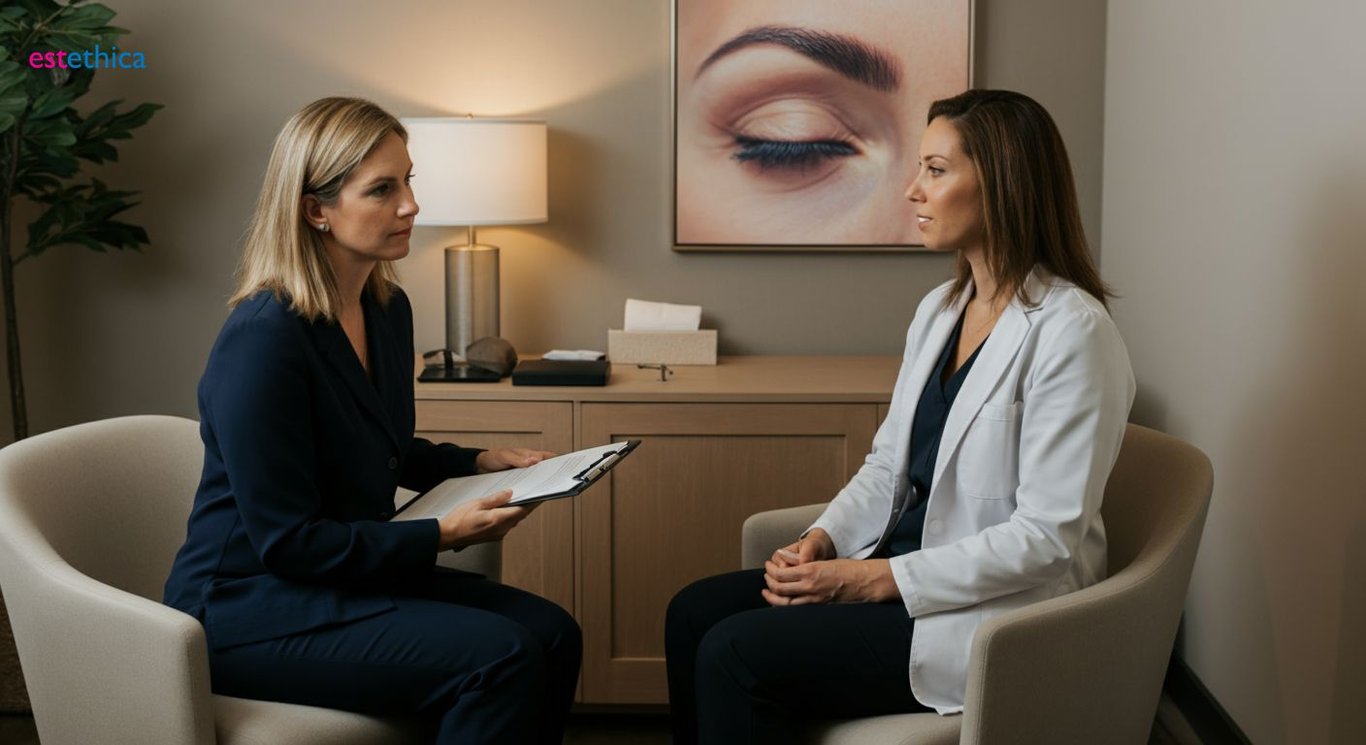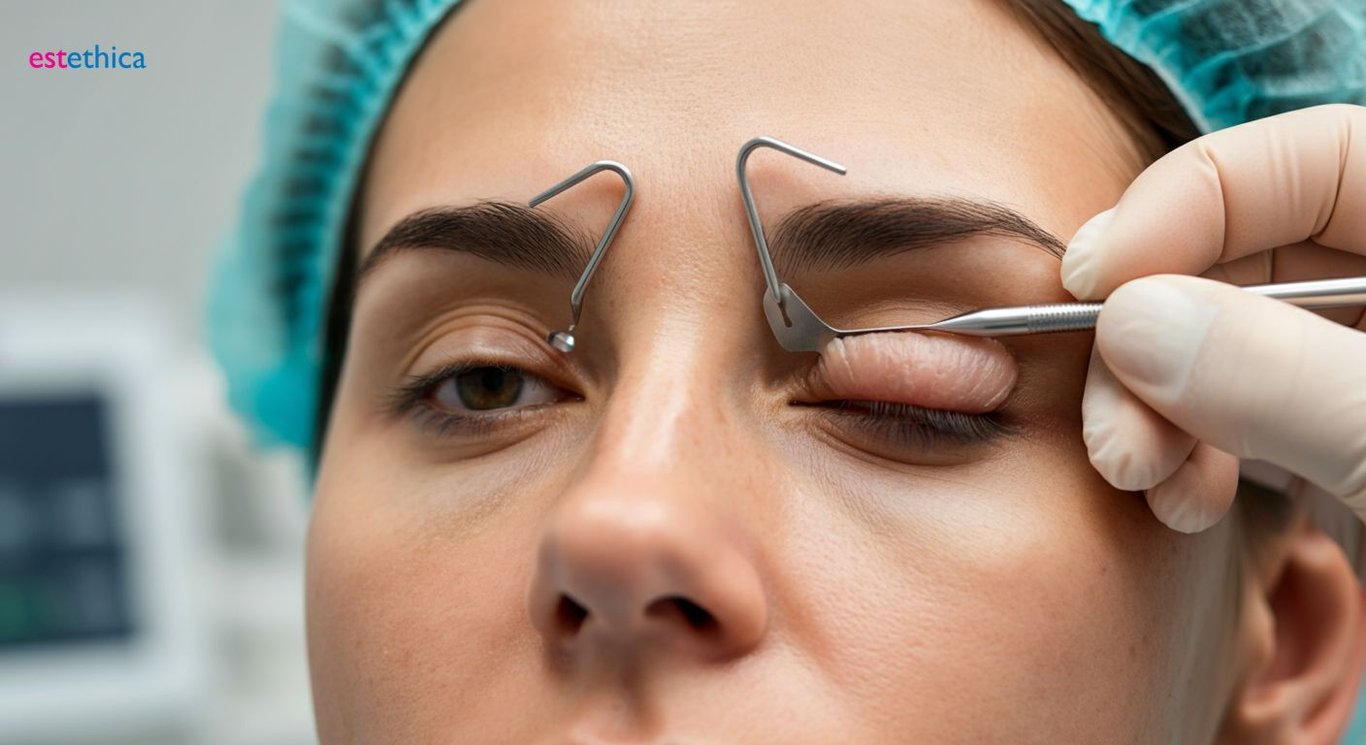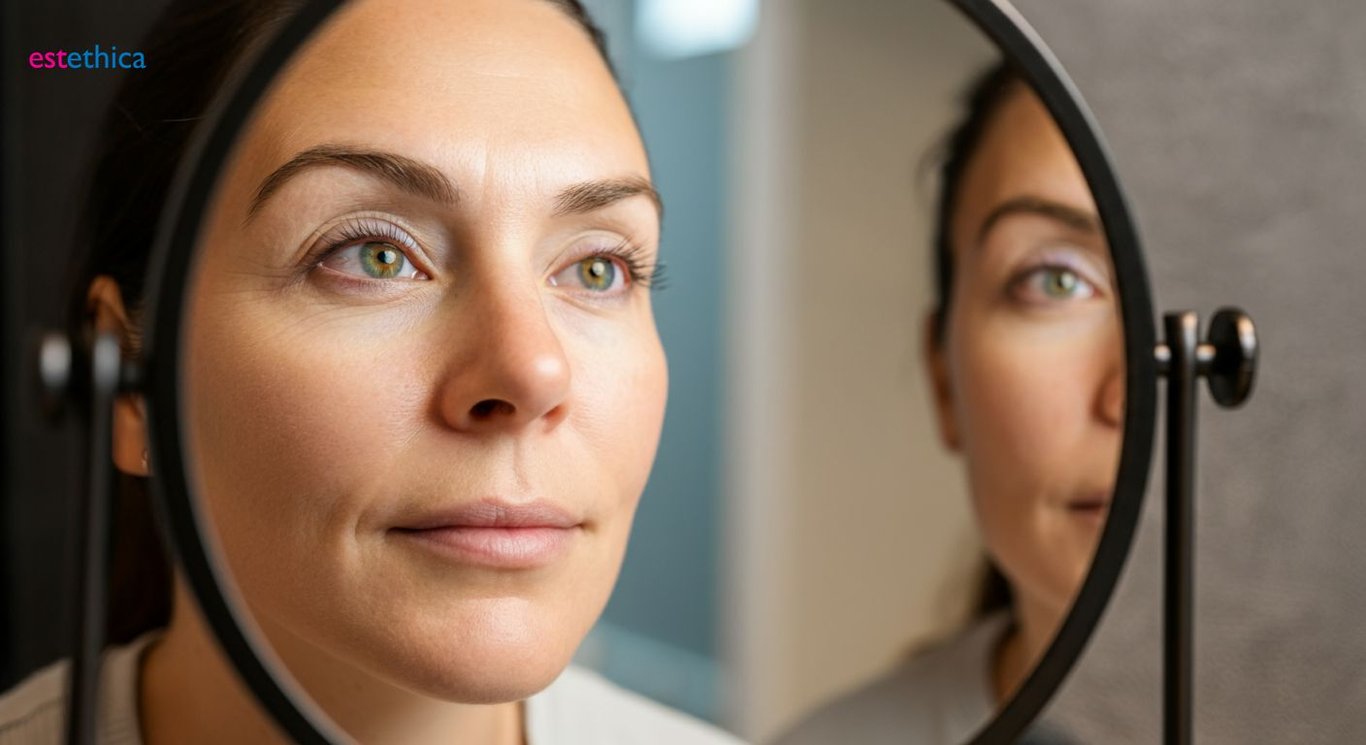Blepharoplasty: Unveiling Brighter Eyes & A Rejuvenated You
Discover how blepharoplasty can rejuvenate your appearance and improve vision. Explore the differences between upper and lower eyelid surgeries, learn about the recovery process, and understand the functional benefits of cosmetic eyelid procedures.
Blepharoplasty, commonly known as eyelid surgery, is a transformative procedure aimed at enhancing your facial appearance and correcting vision-related issues due to droopy eyelids. This comprehensive guide delves into the details of blepharoplasty, contrasting upper and lower eyelid surgeries, exploring their functional benefits, and providing insights into the recovery process.
What is Blepharoplasty Surgery & Is It Right for You?
Understanding Blepharoplasty and Its Benefits
Blepharoplasty, often referred to as eyelid surgery, addresses both functional impairments and aesthetic concerns related to the eyelids. This procedure can correct sagging eyelids that obstruct vision or rejuvenate the appearance of eyes, providing a more youthful and alert look. Determining candidacy involves consulting with a skilled cosmetic surgeon who evaluates individual eyelid structure and overall health, ensuring suitability for the surgery. It’s estimated that approximately 70% of individuals seeking blepharoplasty do so to address age-related changes affecting their vision and appearance.
The procedural approach of blepharoplasty typically involves removing excess skin and, in some instances, muscle tissue from the upper and/or lower eyelids. Often, a customized approach is used that combines several techniques to best meet a patient's aesthetic aims. Prior to making a decision, those considering cosmetic eyelid surgery should grasp both the possible benefits and the potential risks, which are thoroughly reviewed during a consultation with a specialist in ophthalmic plastic surgery.
Typical Reasons for Considering Blepharoplasty:
- Improvement of vision
- Rejuvenated eye appearance
- Correction of eyelid sagging

Upper vs. Lower Eyelid Surgery: Understanding the Differences
Distinct Approaches in Eyelid Procedures
Upper eyelid surgery primarily focuses on the removal of excess skin, often leading to improved vision and a more alert appearance. In about 85% of cases, patients report a noticeable improvement in their field of vision following the procedure. This procedure is generally quicker, involving smaller incisions hidden in the natural creases of the eyelid.
Lower eyelid surgery often addresses the bulging fat deposits and ‘bags’ under the eyes, which can contribute to a tired or aged look. It involves a different set of techniques compared to upper eyelid surgery, sometimes requiring repositioning of fat or smoothing of the skin. Each type targets different functional and cosmetic concerns and may require different recovery protocols.

Cosmetic Eyelid Surgery: Beyond Aesthetics - Functional Benefits
The Functional Advantages of Blepharoplasty
While primarily sought for aesthetic reasons, blepharoplasty also has significant functional benefits. For patients with severe ptosis, the surgery can dramatically improve peripheral vision. Furthermore, correcting eyelid occlusion can prevent irritation and infections resulting from eyelids rubbing against the cornea or conjunctiva.
In addition to better vision, patients often report an increase in self-confidence and satisfaction with their facial appearance. This dual aspect of cosmetic and functional enhancement makes blepharoplasty a uniquely beneficial procedure.
Benefits of Blepharoplasty
- Improved Peripheral Vision
- Reduced Eye Irritation
- Boosted Self-Confidence

Eyelid Surgery Recovery: A Comprehensive Guide to Healing
Navigating the Healing Timeline After Eyelid Surgery
The recovery phase following blepharoplasty is crucial for achieving optimal results. Initially, patients will notice swelling and bruising, which typically subside over the first two weeks. Adhering to post-operative guidelines is essential; this includes using prescribed eye drops to maintain moisture and prevent infection, as well as attending all scheduled follow-up appointments to monitor healing progress. Proper care during this period significantly influences the overall outcome of the surgery. Studies show that patients who strictly adhere to post-operative instructions experience approximately 30% faster healing times.
As the initial swelling decreases, patients can gradually resume normal activities, although strenuous exercise and heavy lifting should be avoided for at least three to four weeks. The final results of eyelid surgery become more apparent as the tissues settle, revealing a rejuvenated and refreshed appearance. Consistent sun protection and diligent skincare are vital to preserving these results long-term. For instance, using high-SPF sunscreen and wearing sunglasses helps protect the delicate skin around the eyes from sun damage, which can prolong the youthful effects of the surgery.
Essential Steps for a Smooth Recovery:
- Apply cold compresses
- Elevate head while resting
- Follow medication schedule
Precision Eyelid Reshaping Enhancing Vision and Appearance
Blepharoplasty offers a way to address vision impairments and aesthetic concerns by correcting sagging eyelids. The procedure involves removing excess skin and, in some cases, muscle tissue, from the upper and/or lower eyelids. Skilled cosmetic surgeons customize the procedural approach to align with the patient's aesthetic aims. The consultation phase is key to understanding the benefits and potential risks before making a decision about cosmetic eyelid surgery.
Esthetica's surgeons specialize in ophthalmic plastic surgery, bringing expertise in both functional and cosmetic aspects of eyelid procedures. Their detailed evaluations ensure patients are suitable candidates, considering both eyelid structure and overall health. This comprehensive approach ensures tailored treatments that address individual needs and concerns, backed by a deep understanding of facial anatomy and aesthetic principles.
Guided Healing Process Ensuring Optimal Blepharoplasty Results
Optimal results are achieved through a crucial recovery phase where prescribed eye drops are used to maintain moisture and prevent infection. Regular follow-up appointments with the surgical team facilitate monitoring progress. Patients can gradually resume normal activities, but heavy lifting should be avoided to support the body's healing process.
Patients report heightened self-confidence and satisfaction following blepharoplasty, highlighting both aesthetic and functional improvements. Diligent skincare practices and consistent sun protection are vital to preserving the rejuvenated appearance long-term. Strict adherence to post-operative instructions is crucial for optimal outcomes and faster healing.
Frequently Asked Questions
What is blepharoplasty and who is a suitable candidate?
What are the key differences between upper and lower eyelid surgery?
Beyond aesthetics, what functional benefits does cosmetic eyelid surgery offer?
What does the recovery process entail after eyelid surgery, and how can optimal results be achieved?
Need expert guidance? Our team is ready to assist you with personalized solutions.
📞 Call Now for Free Support!